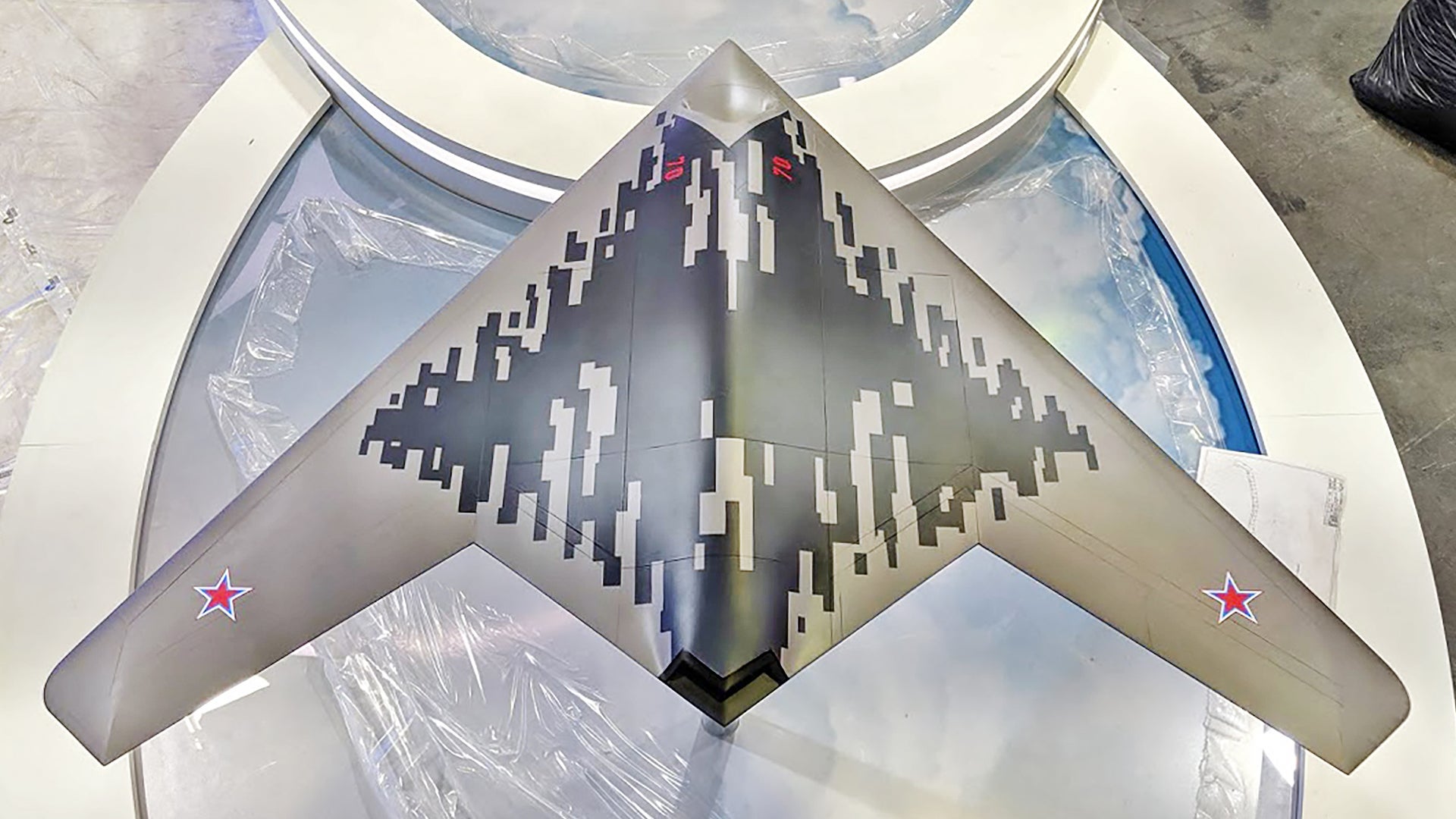The existence of Sukhoi’s S-70 Hunter-B (Okhotnik-B) unmanned combat air vehicle (UCAV) is among the biggest military aerospace developments to come out of Russia this decade. The aircraft initially appeared in a flyable form back in January, with its first flight occurring in early August. One of the biggest questions surrounding the large flying-wing drone is just how stealthy will it actually become. As it sits now, it has major design issues that preclude it from offering all-aspect low-observability. You can read our full analysis on this topic here. But pictures The War Zone has obtained from the Sukhoi pavilion at Russia’s biennial MAKS air show and weapons expo on the outskirts of Moscow show us what the company envisions the Hunter to finally look like once it fully matures.
The photos of the model depict an evolved Hunter that is devoid of the multiple antennas, small air inlets and exhaust vents, air data probes, and other structures that currently pockmark its skin. This is not all that surprising as it is common to fit those systems in the most reliable and easiest way possible for a stealthy drone’s early development. America’s X-47B also had a similar configuration in this regard and its production version would have been significantly modified to maximize low-observability.

Still, actually realizing the migration of these essential systems into low-observable apertures concealed below the aircraft’s smooth skin or mounted conformally within it requires a whole other level of material science and engineering know-how.
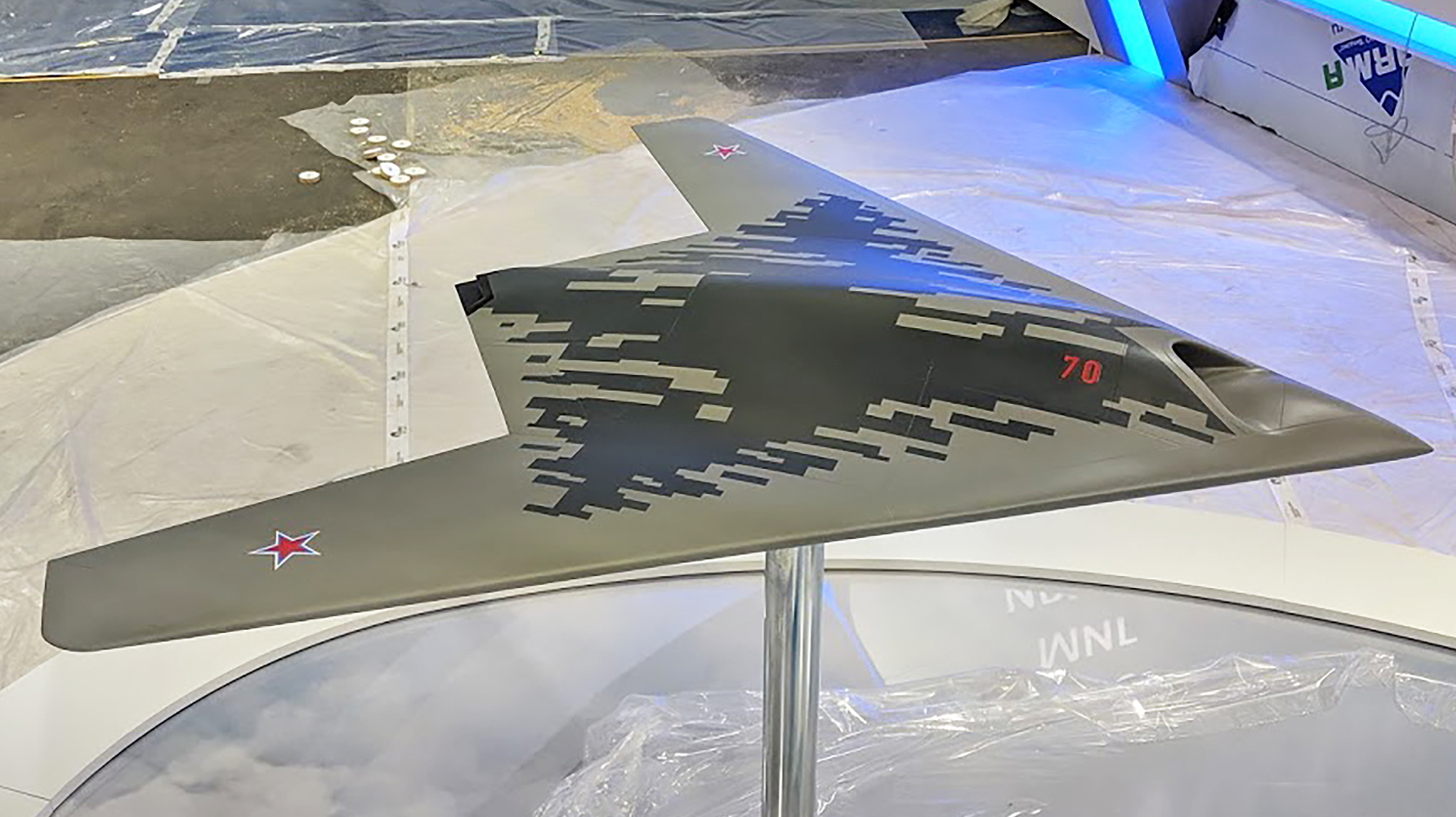
The company’s Su-57 fighter, which you can read our full analysis on here, does show some expertise in this regard, but for an unmanned system that has to reliably communicate with other aircraft at the least, and beyond-line-of-sight via satellite data-link if it is to realize its full potential, is an extreme challenge. The United States has spent decades and untold sums of money to come up with solutions to these problems and master their execution materially.
The same can be said with the biggest and most important change from the flying Hunter to what is seen on this display model—its exhaust. Currently, the drone has a miserable propulsion arrangement when it comes to low-observability. The rear of the flying prototype is far from refined in terms of stealthiness in regards to both the radio frequency and infrared spectrum.

The aircraft appears to be fitted with an AL-31 turbofan engine that comes from the Su-27 family of fighters, with minimal refinement. Once again, you can read our full analysis of this configuration here. So, at the moment, Russia’s Hunter design is far from realizing the low-observability it seems to aspire towards, but now we know that Sukhoi is not only aware of this, the company hopes to fix it as the aircraft moves forward in development.
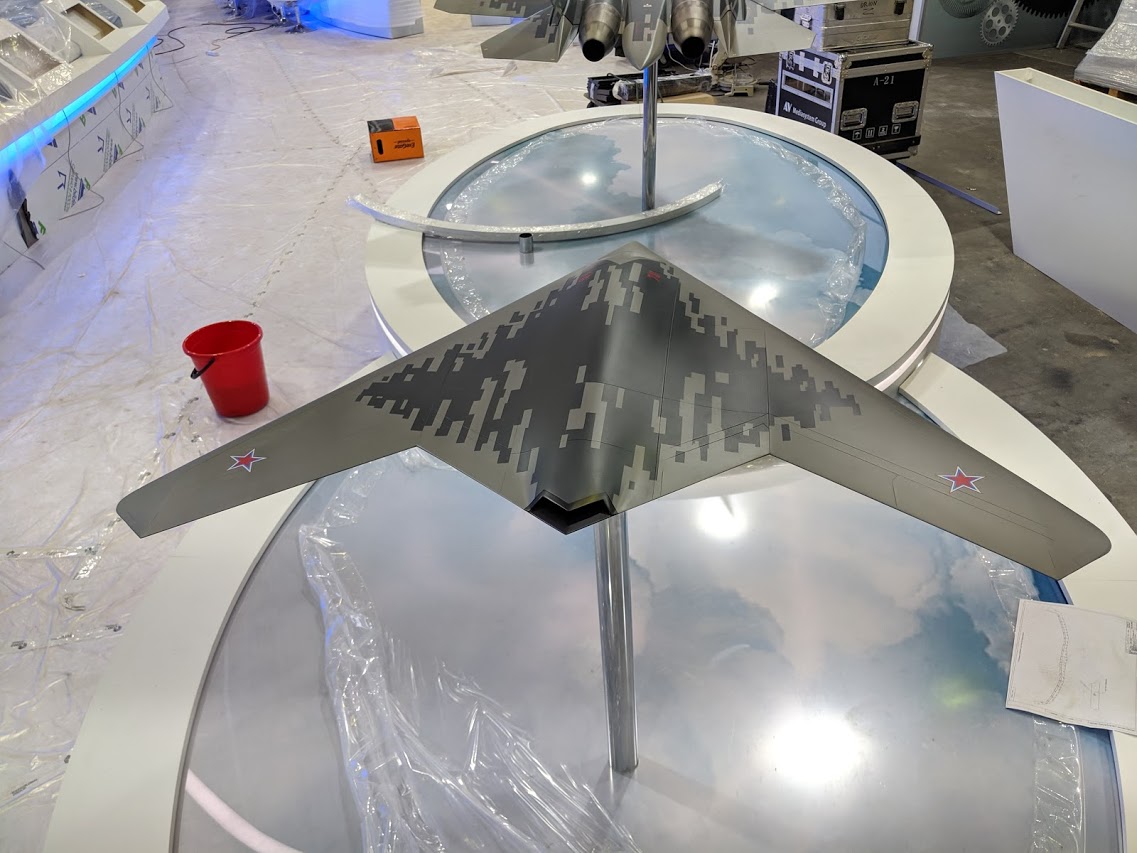
This is a major admission. The firm’s Su-57 never really ended up getting its own propulsion arrangement refined to a point where low-observability was optimized to any major degree. This is not just about the conventional rear nozzle and engine nacelle configuration, but also the fact that its fan faces are exposed to radar from certain forward aspect angles. Baffles over the engine fan faces, such as those found on the Super Hornet, can attenuate some of the area’s radar reflectivity, but a true hidden engine face via serpentine duct designed with low-observable structures concealed beneath its smooth walls is ideal. Hunter, as it sits now, also may have this issue, but it looks like the inlet is also supposed to be revised significantly, according to the model.
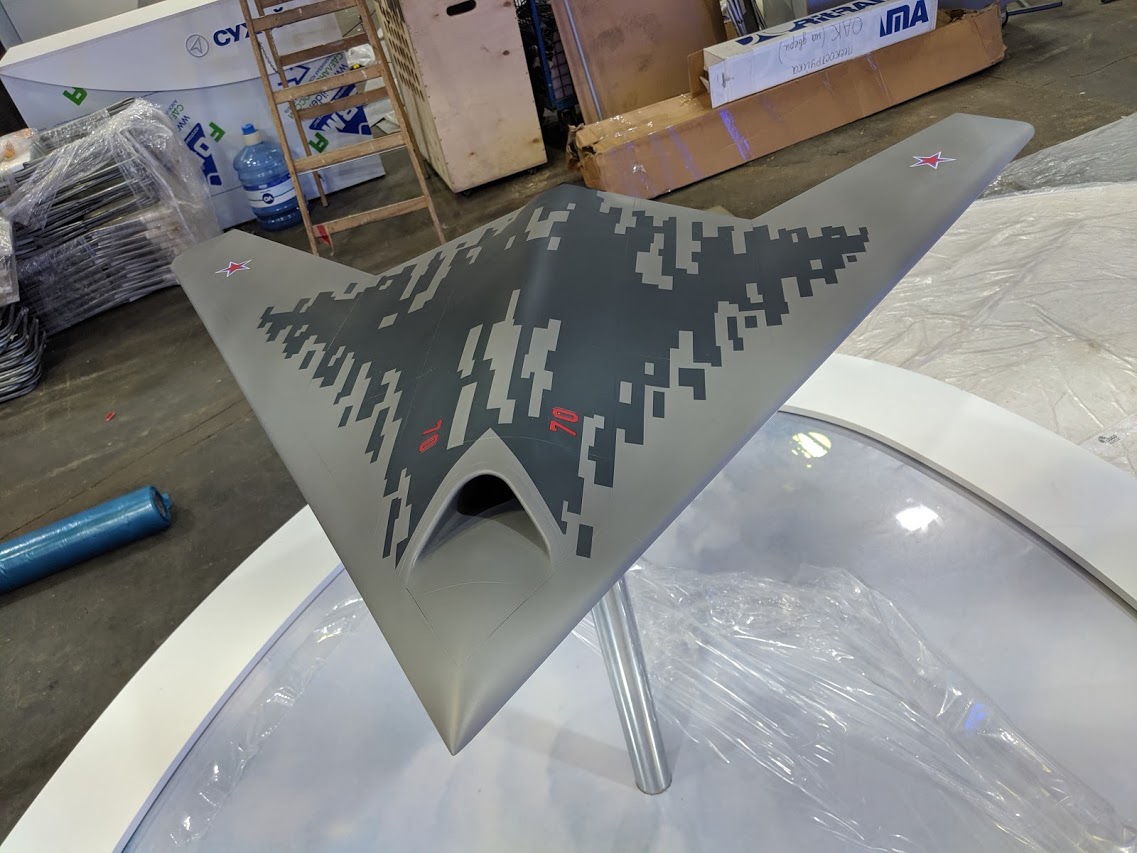
One of the hardest things to do design-wise on a low-observable aircraft of any type, and especially a flying wing, is to create an exhaust that is stealthy in terms of radar signature, while also working to minimize infrared signature. Starting with a platypus like configuration, where the exhaust isn’t directly exposed to most line-of-sight aspects, is key. This is especially true from lower hemisphere viewing angles. Extending a deck area out from the exhaust masks the core of its heat and radar signature from most viewing aspects aside from directly to the rear and can even play a role in cooling the exhaust emissions. The B-2, Tacit Blue, X-47B, Bird of Prey, F-117, X-45C, and YF-23 all use this design element.
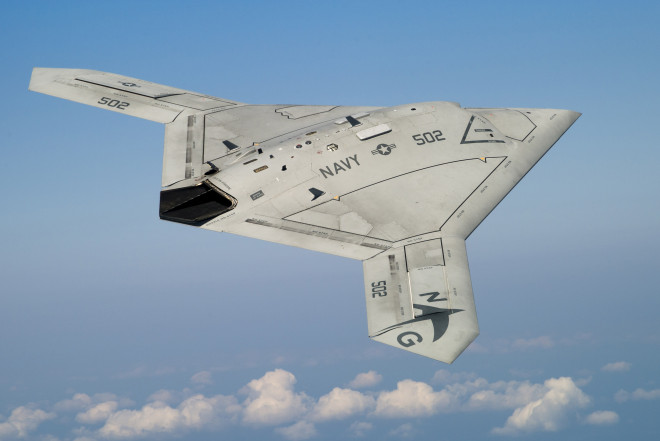
In this case, the S-70’s exhaust is most reminiscent of the one found on the X-45A demonstrators that largely paved the way for American UCAV development, that is before the vast majority of those initiatives strangely evaporated. You can read all about the X-45A and America’s mysteriously missing UCAVs in this past special feature of mine.
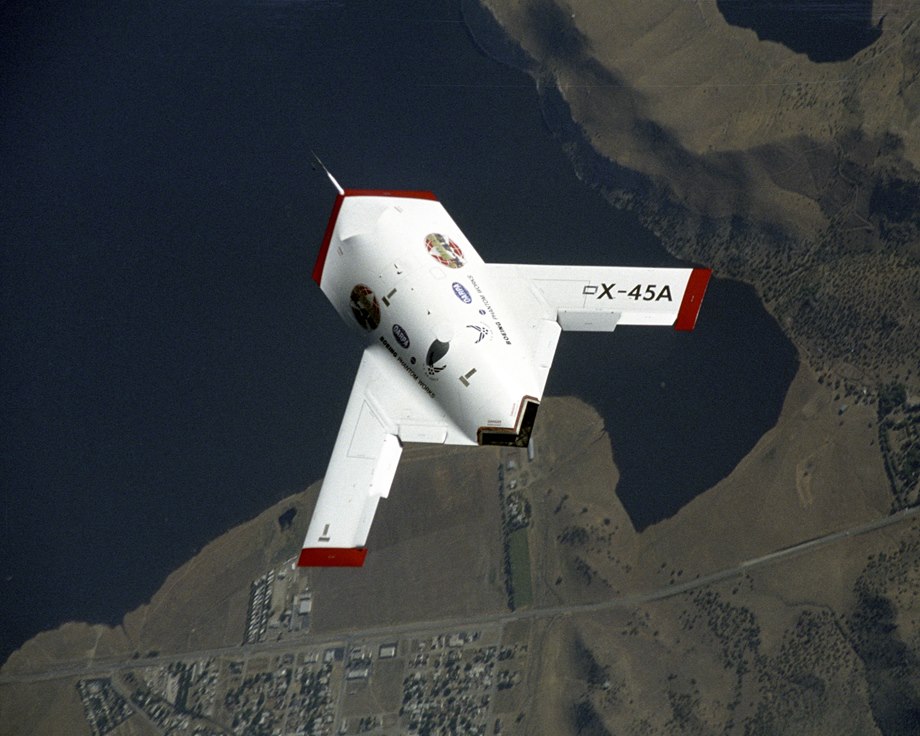
Of course, this is just a model. While it is indicative of what Sukhoi is thinking, the question of if they can actually realize such a vision remains to be answered. Once again, the material science and construction capabilities needed to pull this off are quite advanced. We have not seen anywhere near this level of low-observable sophistication on the Su-57, an aircraft that has been in development for nearly a decade.

Something else should be noted here, as well. It is all but fact that the Russians were able to examine the RQ-170 Sentinel stealth drone that fell into Iran’s hands in 2011. Regardless of the RQ-170’s sophistication, there is some Skunk Works magic packed into that aircraft. At the very least, it represented a low-observable flying wing design with all the sensors, apertures, flight control concepts, communications systems, hardware, and exhaust configuration that go into it.
Such an opportunity represented a near-instant leap forward when it came to understanding stealthy flying-wing unmanned aircraft design philosophy. Yet examining something or attempting to reverse engineer it, doesn’t mean the technology transfers in a timely manner. Knowing how something works is one thing. Being able to actually reproduce it with organic industrial capabilities is another thing entirely. There is also the coatings issue. Radar Absorbent Material (RAM) has a huge impact on a stealthy aircraft’s signature beyond its shape. Russia still has a lot prove in this regard.

Regardless, we now know that Sukhoi is not looking for a uniquely Russian ‘balanced’ approach to low-observability with their Hunter drone. They aspire to field a very low-observable design, one that can make up for some of the stealthy shortcomings of its Su-57 counterpart—an aircraft it is supposed to work directly with in the ‘loyal wingman’ role.
This synergistic strategy actually makes a lot of sense and it will tightly bind the Su-57 and S-70 together in the future as the technology matures. It could also become an attractive export option for countries looking for an updated fighter and a stealthy, deep penetrating capability. Neither Su-57 or S-70 can provide both, but as a team, they can offer a relatively flexible solution.
That is if Sukhoi can actually turn the Hunter into the ghostly craft they now clearly envision it to be.
Author’s note: A big thank you to Michael Jerdev for providing these great photos. Make sure to follow him on Twitter at @Muxelaero.
Contact the author: Tyler@thedrive.com
